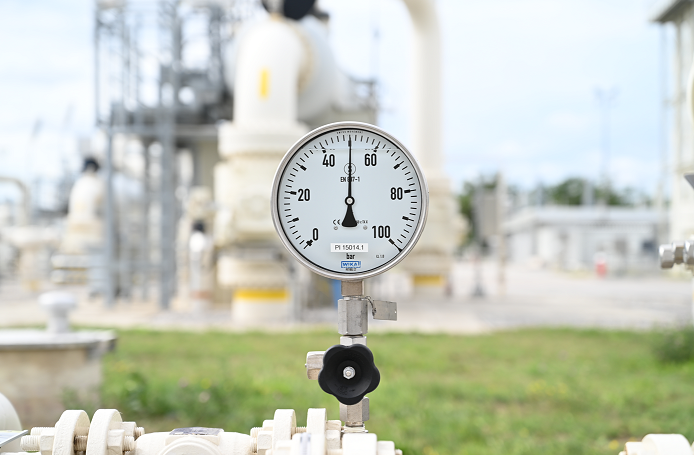Imports rise and delivery routes change (period from May to mid-July 2025)
Total Austrian gas consumption in the first five months of 2025 amounted to around 41 TWh, around 21% higher than in the same period the previous year (34 TWh).
Between May and mid-July 2025, a total of 26 TWh of natural gas was imported into Austria, which is around 10% more than in the same period in 2024 (24 TWh). A clear shift in import routes emerged: whereas the majority flowed via the Baumgarten hub (23 TWh) in the same period in 2024, almost all imported gas came via the western (22 TWh via Germany) and southern (4 TWh via Italy) feed-in points in the summer of 2025.
Export routes have also shifted, with a particularly striking sharp increase in exports to the east via Mosonmagyaróvár to Hungary (9 TWh; in 2024, this figure was 0.02 TWh).
Storage at full speed
Compared to the period from January to April 2025, average daily import volumes to Austria increased by 48% between May and mid-July 2025. This, combined with the temperature-related decline in demand, enabled a significant increase in storage rates in Austria. Between 1 May and 27 July, storage levels climbed from around 48% to 72%.
This puts Austria in a strong regional position and above the EU average of around 63% (as of 27 July 2025).
Conclusion: Diversified gas imports secure supply
Austria's gas supply remains stable and diversified. The significant increase in imports via Ger-many and Italy has compensated for the almost complete loss of Russian gas flows via Baum-garten. At the same time, the higher volumes remaining in the country and intensive storage mean that Austria is highly likely to be well prepared for the start of the 2025/26 winter. The utilisation of the West Austria Gas Pipeline (WAG) arriving from Germany remains at a consistently high level. The additional exports handled via this route to Hungary also continue onwards to Slovakia and Ukraine, highlighting Austria’s important role as a transit country in the region.

